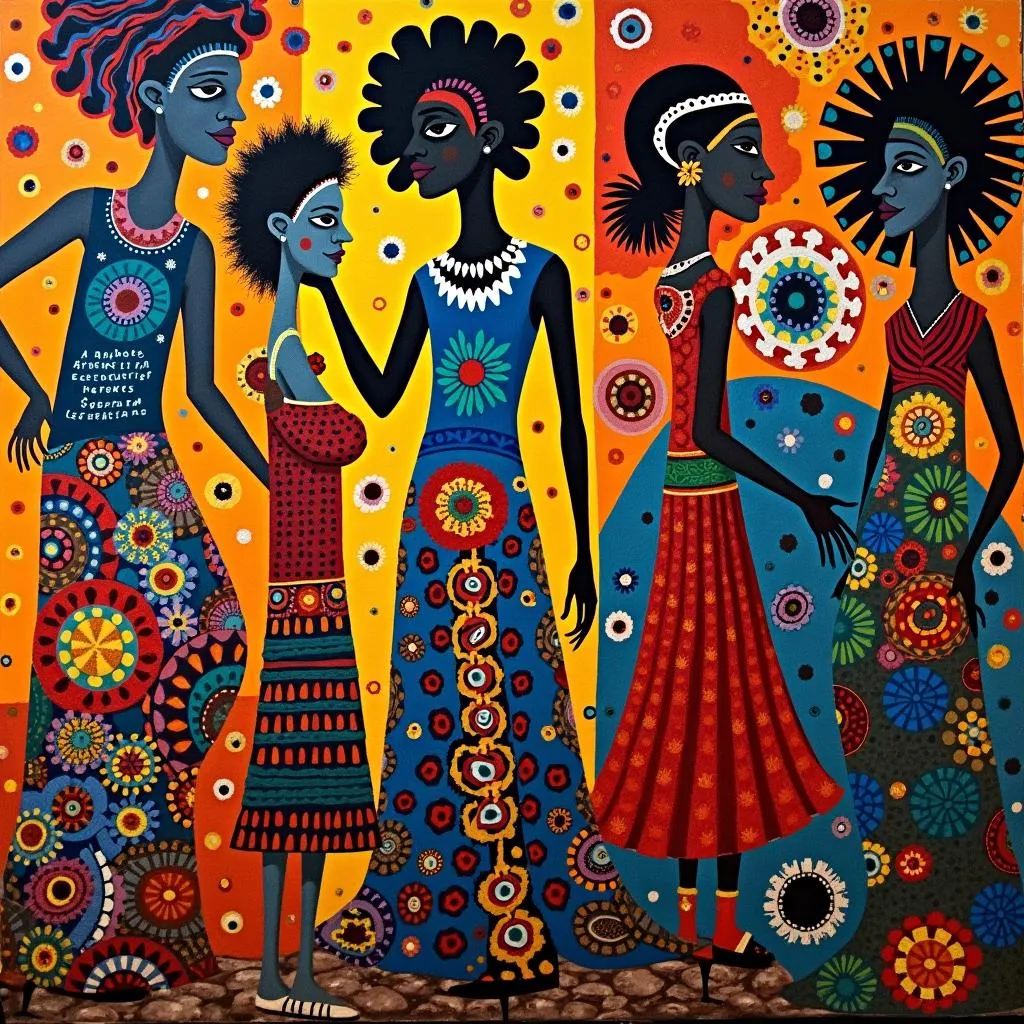Unveiling the Magic of African Labradorite
African Labradorite, a gemstone renowned for its captivating iridescence, holds a special place in the world of minerals. This mesmerizing stone, with its play of colors ranging from vibrant blues and greens to fiery oranges and reds, has captivated gem enthusiasts and collectors for centuries. Its beauty is not just skin deep, however; African labradorite also carries a rich cultural significance across the African continent.
The Geological Wonders of African Labradorite
African labradorite is primarily found in Madagascar, a biodiversity hotspot known for its unique geological formations. The specific conditions required for its formation contribute to the stone’s distinctive characteristics. Labradorite is a feldspar mineral, and its iridescent effect, known as labradorescence, is caused by the interference of light within its layered structure. This optical phenomenon creates a shimmering display of colors that shift and change depending on the angle of view.
Madagascar’s unique geological history, which includes volcanic activity and metamorphic processes, has created an ideal environment for labradorite formation. The specific combination of minerals and pressure present in the earth’s crust has resulted in some of the most spectacular labradorite specimens found anywhere in the world.
African Labradorite in Culture and Tradition
Beyond its geological significance, African labradorite holds a revered position in many African cultures. It is often associated with mystical properties and is believed to possess protective and healing powers. In some communities, labradorite is used in traditional healing practices, and its vibrant colors are seen as a reflection of the wearer’s inner spirit.
For instance, some Malagasy tribes believe that labradorite can enhance intuition and promote spiritual growth. They use the stone in rituals and ceremonies to connect with their ancestors and seek guidance from the spiritual realm. The stone is also considered a symbol of strength and resilience, helping individuals overcome challenges and achieve their goals.
“Labradorite is more than just a stone,” says Dr. Zara Mkwasi, a renowned anthropologist specializing in East African cultures. “It is a tangible link to the spiritual world, a symbol of heritage and a source of empowerment for many communities across Africa.”
Choosing and Caring for Your African Labradorite
Whether you’re drawn to its shimmering beauty or its cultural significance, choosing the right African labradorite piece can be an exciting experience. Look for stones that exhibit strong labradorescence and a vibrant play of colors. The intensity and range of colors are key factors in determining the quality and value of the stone.
Caring for your African labradorite is relatively straightforward. Avoid exposing the stone to harsh chemicals or extreme temperatures, as this can damage its surface. Clean your labradorite jewelry with a soft cloth and warm, soapy water. Store your pieces separately to prevent scratching.
Conclusion: Embrace the Magic of African Labradorite
African labradorite, with its dazzling play of colors and rich cultural significance, is a truly remarkable gemstone. Whether you’re a seasoned collector or simply appreciate the beauty of natural wonders, African labradorite offers a unique connection to the vibrant spirit of the African continent. Consider adding a piece of this mesmerizing stone to your collection and experience its magic firsthand.
FAQ
-
What makes African labradorite unique? Its unique labradorescence, a play of colors caused by light interference within its layered structure, originating from Madagascar’s specific geological formations.
-
What are the common colors of African labradorite? Blues, greens, oranges, and reds are common, shifting depending on the viewing angle.
-
How is African labradorite used culturally? It’s often associated with mystical properties, used in healing practices, and seen as a symbol of strength and connection to the spiritual realm.
-
How should I care for my African labradorite? Avoid harsh chemicals and extreme temperatures; clean with a soft cloth and warm, soapy water.
-
Where can I purchase authentic African labradorite? Reputable gem dealers and jewelry stores specializing in ethically sourced gemstones.
-
What is the price range for African labradorite? It varies based on size, quality of labradorescence, and whether it’s set in jewelry.
-
Is African labradorite considered a rare gemstone? While not exceptionally rare, high-quality specimens with intense labradorescence are highly valued.
Common Questions about African Labradorite
Scenario 1: A customer is unsure about the difference between labradorite and other iridescent stones. They ask about the specific qualities that distinguish African labradorite.
Answer: African labradorite is distinguished by its particular range of colors and the intensity of its labradorescence, often more vibrant and dramatic than in other varieties. The geological conditions in Madagascar contribute to these unique characteristics.
Scenario 2: A customer is interested in using labradorite for its spiritual properties and asks about its traditional uses in African cultures.
Answer: In various African traditions, labradorite is believed to enhance intuition, facilitate spiritual growth, and offer protection. It’s used in rituals and ceremonies to connect with ancestral spirits and seek guidance.
Further Exploration
Explore our other articles on African gemstones and cultural artifacts to delve deeper into the rich heritage of the continent. Learn about the significance of other stones like malachite, tanzanite, and ruby.
When you need assistance, please contact us: Phone: +255768904061, Email: [email protected], or visit our address: Mbarali DC Mawindi, Kangaga, Tanzania. Our customer care team is available 24/7.
